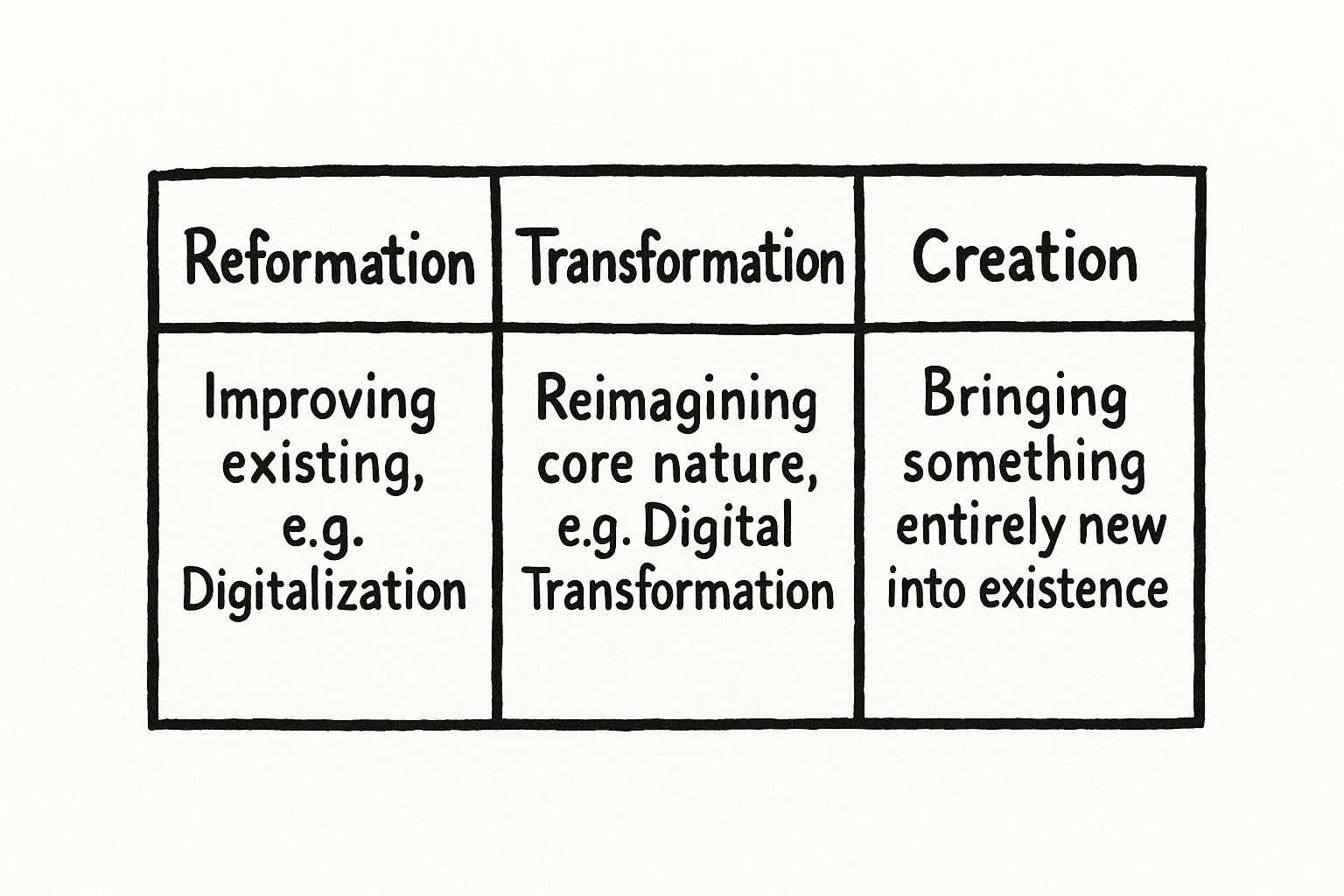Digitization vs. Digitalization vs. Digital Transformation
To fully grasp digital transformation, it is essential to distinguish it from two related terms: digitization and digitalization. Understanding these distinctions clarifies the true scope and strategic nature of transformation.
Digitization
Section titled “Digitization”This represents the most basic level, involving the conversion of analog information or processes into a digital format. Examples include scanning paper documents into digital files or converting physical photographs into digital images. Digitization primarily focuses on making information computer-readable but does not inherently change the underlying process itself.
Digitalization
Section titled “Digitalization”This step involves leveraging digital technologies and digitized data to enhance existing business operations or processes. It utilizes digital tools to improve the efficiency or effectiveness of current ways of working, such as implementing workflow software for a task previously managed manually. Digitalization primarily aims to optimize the current business model, making it “digitized,” focusing on operational excellence within the existing framework.
Digital Transformation (DT)
Section titled “Digital Transformation (DT)”This represents the most profound level of change. DT involves a fundamental redesign of business models, operational processes, organizational structures, and capabilities to fully leverage digital opportunities. It fundamentally alters how a business functions, creates value, and interacts with its ecosystem. DT often leads to entirely new business models, revenue streams, and customer experiences. It aims to move a business beyond being merely “digitized” to becoming truly “digital” by creating novel value propositions.
| Feature | Digitization | Digitalization | Digital Transformation |
|---|---|---|---|
| Focus | Converting analog to digital | Improving existing processes | Redesigning business models |
| Goal | Making information digital | Operational efficiency | New value creation, competitive edge |
| Impact | Changes information format | Optimizes current operations | Changes how the business operates |
| Scope | Specific information or processes | Specific operations or processes | Entire business model and organization |
| Outcome | Digital data | ”Digitized” business (more efficient) | “Digital” business (new value) |
| Requirement | Basic technology | Digital tools, digitized data | Strategic vision, holistic change |
An alternative perspective frames the levels of change ambition through three categories, applicable in both digital and potentially autonomous contexts:
- Reformation: Improving an existing process or entity without fundamentally changing its nature (akin to Digitalization).
- Transformation: Radically reimagining the core nature and function of the process or entity (akin to Digital Transformation).
- Creation: Bringing something entirely new into existence, often a new business model or value proposition not previously possible.
This framework (Reformation, Transformation, Creation) helps clarify the intended depth and nature of change initiatives, whether focused on improving the existing, fundamentally altering it, or building something entirely novel.

The fundamental mindset shifts required for true Digital Transformation can also be viewed through the lens of changing strategic assumptions:
| Strategic Domain | Traditional Assumption | Digital Age Assumption |
|---|---|---|
| Customers | Mass market, passive recipients | Dynamic network, active influencers |
| Competition | Within defined industries | Across fluid, asymmetric industries |
| Data | Operational tool, costly | Core strategic asset, vital insight |
| Innovation | Top-down, planned, risk-averse | Bottom-up, experimental, iterative |
| Value | Fixed offering, defined by firm | Evolving, adaptive, customer-driven |
While digitization and digitalization are often necessary prerequisites or components of DT, they do not constitute digital transformation in themselves. True transformation demands a holistic, strategy-led approach focused on fundamental change and sustainable competitive advantage, underpinned by shifts in these core strategic assumptions.
This progression, particularly concerning AI’s role, can be visualized along a continuum reflecting increasing sophistication and autonomy:
- Incremental: Focuses on automating specific tasks (aligns with Digitization).
- Efficiency: Aims to optimize existing processes (aligns with Digitalization or Reformation).
- Transformation: Seeks fundamental business model innovation and new value creation (represents true Digital Transformation, often powered by advanced AI).